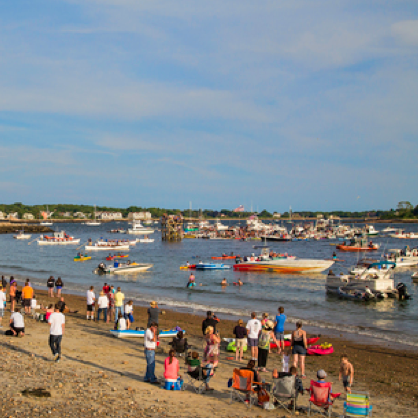It’s 6:15 AM on this cool and crisp October morning in Plymouth. MA. I pick up Bob, my friend and avid outdoor photographer for a trip up Boston’s south shore to the Scituate Lighthouse and Harbor. It’s after Labor Day, and the tourists are nowhere to be seen. We’re excited!
I park the car, and the first order of business is to stroll around the lighthouse looking for good light and perspectives for optimal compositions. We grab our equipment and split up while we capture our images.
Nestled along the rugged Massachusetts coastline, this stunning landmark tells the story of maritime navigation and serves as a cherished symbol of the community. In this post, we’ll explore the the Scituate Lighthouse’s history, architectural beauty, and serene atmosphere at dawn.
Built in 1810, this structure is a testament to America’s maritime heritage. Commissioned by the federal government, its primary purpose was to enhance navigation along the Massachusetts coastline and guide vessels safely into Scituate Harbor. The lighthouse, constructed from locally sourced granite, was strategically placed atop a rocky outcrop to maximize visibility for approaching ships.
As the harbor became increasingly vital for trade and commerce, this lighthouse reduced maritime accidents and ensured safe passage. Over the years, maritime trade flourished, thanks partly to the steadfast light from the iconic tower.
Over its two centuries of service, Scituate Lighthouse has been a silent witness to significant historical events. During the War of 1812, it served as a lookout point against potential threats, ensuring the safety of the coast. In 1933, the lighthouse was automated, marking a shift towards modern navigation and systems that reflected technological advancements. Despite these changes, the lighthouse has preserved its charm and historical significance, remaining a beloved landmark for residents and visitors alike.
The architectural design of Scituate Lighthouse is a classic representation of early 19th-century lighthouse construction. Standing tall at 70 feet, its cylindrical shape tapers slightly as it ascends, providing both structural integrity and an aesthetically pleasing silhouette. Made of durable granite, the lighthouse is a robust landmark resilient to relentless coastal elements.
Above the tower, the lantern room houses the beacon, traditionally illuminated by a Fresnel lens, which allowed for efficient and far-reaching illumination. The light has been modernized today, but it continues to serve as a vital navigational aid. The rotating light can be seen from miles away, guiding sailors safely to shore as they navigate the challenging waters of the Atlantic.
Across from the lighthouse is Scituate Harbor where boats are just starting to take off in this early morning hour. The shoreline is a striking landmark that symbolizes resilience, history and community pride. The sandy beaches and historic homes create a picturesque coastal
environment that draws tourists, artists and photographers. At sunrise, the lighthouse emerges from the morning haze, casting a long shadow across the rocks and illuminating the serene waters below.
The sun is getting higher in the sky now signalling the end of the good light for creating stunning images filled with depth and warmth. Bob and I wrap it up, and we head back to Plymouth. I love lighthouses, and I have accumulated an impressive list of sites worthy of a visit. I keep my fingers crossed for good weather as winter approaches.



